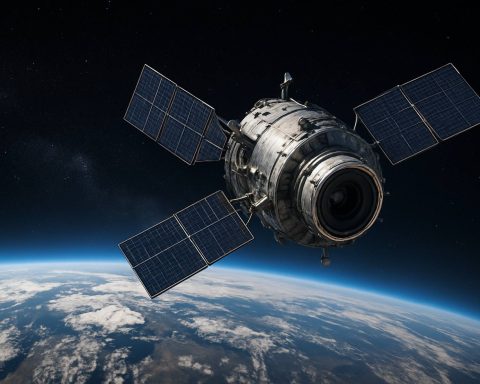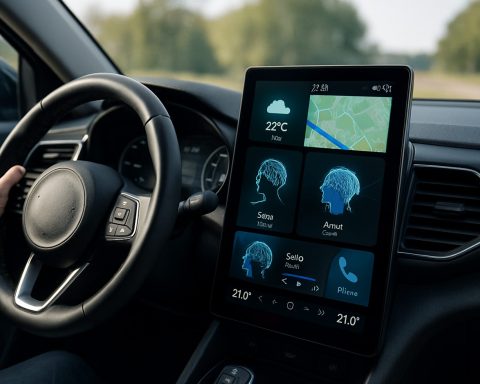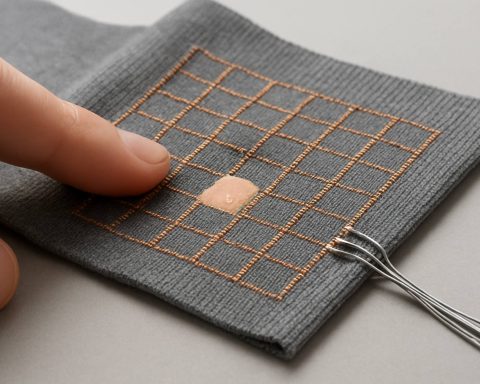- BYD, a leading global electric vehicle (EV) manufacturer, is taking direct control of its Australian operations, replacing previous distributor EVDirect.
- This move allows BYD to introduce a wider range of EV models, including premium options and advanced new vehicles tailored to local preferences.
- Benefits for Australian drivers include streamlined logistics, faster vehicle delivery, expanded showrooms, and improved aftersales service.
- The new retail network, EV Dealer Group Pty Ltd, is owned 80% by Eager Automotive and 20% by EVDirect, maintaining continuity with familiar leadership.
- With growing demand for electrification in Australia, BYD’s direct presence signals a major shift—offering more choices and raising the standard for the electric vehicle market.
A sleek new era is revving up for motorists Down Under. BYD, the Chinese giant that’s quietly disrupted the global electric vehicle race, is taking command of its Australian destiny—jettisoning its intermediary, EVDirect, and stepping boldly onto the local stage as a fully-fledged factory-backed powerhouse.
This seismic shift, effective July, signals more than a corporate reshuffle. BYD now holds the keys to its own portfolio, unshackled, free to curate cutting-edge models for drivers eager to ditch combustion for clean innovation. Expect not only more vehicles, but a broader array: from the current compact Atto 3 to tantalizing whispers of luxury and adventure—think curvy Denza premium sedans or the rugged, tech-laden Fangchengbao, and even the futuristic Yangwang halo marque.
Why now? Scale and timing. Australia’s appetite for electrification is swelling, and BYD—already one of the world’s largest EV producers, trailing only Tesla—has growth in its DNA. This direct presence should streamline logistics, reinforce quality control, and shrink those all-too-familiar wait times for hot new models. Drivers can anticipate a surge in ready-to-drive stock, plus expanded showrooms, more robust aftersales support, and an ownership experience tailored to local needs.
The transition is more evolution than rupture. EVDirect clings to a 20% stake in the new retail network, EV Dealer Group Pty Ltd, partnering with major player Eager Automotive for an 80% share. Crucially, familiar faces remain at the wheel: Luke Todd of EVDirect becomes executive chairman, while seasoned CEO Dave Smitherman continues in his role.
Australia’s next phase in electric mobility has never looked brighter—or more competitive. After all, when a brand like BYD takes the reins, the promise isn’t just more choice. It’s about rewriting the rules of what vehicles could—and should—be in the age of electrification.
For those following the global EV surge, BYD stands as a testament to how rapidly the landscape can transform. And for Australian drivers, the open road just got a lot more interesting.
Key takeaway: A direct BYD presence means more models, better service, and a turning point for how Australians buy and experience electric vehicles.
Aussie EV Revolution Ignited: BYD’s Direct Takeover Unlocks Game-Changing Perks for Drivers
Introduction
Australia is witnessing a tremendous shift in its electric vehicle (EV) landscape as BYD, China’s electric powerhouse, seizes direct control of its Australian operations. No longer tethered to a local distributor, BYD is shaping an electrifying future by streamlining sales, expanding model variety, and promising unrivaled customer support.
But what does this seismic shift mean for drivers, the market, and BYD’s global ambitions? Let’s dig deeper into the facts, features, pros and cons, and strategic implications—plus insider tips to help you ride the EV wave.
—
What Is BYD and Why Is Its Move in Australia So Significant?
BYD (Build Your Dreams), headquartered in Shenzhen, is the world’s largest EV manufacturer by volume, consistently battling Tesla for the top spot ([Fortune](https://www.fortune.com)). The company leverages vertical integration: manufacturing everything from batteries to chips, allowing it to bring innovative vehicles to market fast and affordably. BYD’s Blade Battery is globally lauded for safety and longevity ([Bloomberg](https://www.bloomberg.com)).
Significance of Going Direct:
– Eliminates the “middleman”—enabling lower prices and direct customer feedback loops.
– Accelerates model launches and aftersales support.
– Lets BYD supply vehicles directly, speeding up delivery and improving inventory accuracy.
—
More Than Just the Atto 3: An Expanded EV Portfolio
Current Models:
– Atto 3: Australia’s top-selling electric-only SUV.
– Dolphin: Compact hatch for urban commuters.
– Seal: Sleek sedan, rivaling Tesla Model 3.
Incoming Line-Up:
– Denza Series: BYD’s luxury sub-brand, co-developed with Mercedes-Benz, targets premium buyers with sophisticated features and styling.
– Fangchengbao: A new, rugged sub-brand focusing on adventure SUVs packed with smart tech.
– Yangwang: BYD’s “halo” marque, builds ultra-premium, high-performance EVs.
TIP: Expect official launches staggered throughout 2024 and 2025, with more body styles and trims tailored for Australian tastes.
—
How-to Steps: Buying a BYD EV in Australia
1. Research: Use official resources (the [BYD homepage](https://www.byd.com/)) and compare models, range, specs.
2. Pre-register: Join BYD’s local mailing lists for early test drives or stock alerts.
3. Visit Showrooms: Expanded physical presence is on the way; more direct sales staff, dedicated service.
4. Financing & Incentives: Check for local EV rebates and financing deals through BYD’s partners or your state government ([Australian Government EV incentives](https://www.energy.gov.au)).
5. After-sales: Expect dedicated BYD tech support and parts, reducing service times and costs.
6. Delivery: BYD’s streamlined logistics mean shorter waitlists and improved tracking.
—
Real-World Use Cases and Insights
– Fleet and Rideshare: Major operators like Uber and regional taxi fleets are eyeing BYD for cost savings and reliability.
– Urban vs. Regional: With extended model range, expect city runabouts and long-range offerings for rural drivers.
– Charging Compatibility: BYD models use industry-standard CCS2 ports, compatible with most Australian public and home charger setups.
—
Reviews & Comparisons
Pros:
– Competitive pricing—up to 20% cheaper than many Western rivals.
– Safety: Advanced driver assistance, Blade Battery tech.
– Eco-friendly manufacturing—BYD’s global plants run on significant renewable energy.
Cons:
– Brand recognition is developing—some may prefer established Western badges.
– Software updates and infotainment quirks reported in early reviews.
– Some interior finishes don’t match German luxury competitors, but are improving.
Comparison:
– BYD Atto 3 rivals MG ZS EV, Tesla Model Y, and Hyundai Kona Electric, offering similar range (320–420 km WLTP) at a lower price point.
—
Market Forecasts & Industry Trends
– EVs are projected to account for up to 25% of all new Australian car sales by 2028, up from just 8% in 2023 ([Australian Automobile Association](https://www.aaa.asn.au)).
– BYD, with aggressive pricing and scaled-up supply, is positioned to jump from a niche player to a mass-market leader.
– Australia’s charging infrastructure is expected to grow 300% by 2025, boosting EV practicality nationwide.
—
Controversies & Limitations
– Geopolitical risks: Some fear overreliance on Chinese technology in national infrastructure.
– Servicing network: Rapid expansion brings growing pains; BYD must ensure technical standards and training keep pace.
– Resale values: Like most EVs, rapid tech development can affect second-hand prices, though BYD hopes to offset this with strong warranty support.
—
Security, Sustainability & Compatibility
– All BYD vehicles are built with end-to-end encrypted software and over-the-air (OTA) update capabilities.
– Strong focus on ethical sourcing of critical minerals and recycling of EV batteries.
– Integration with solar and home storage systems via BYD’s global energy solutions division ([BYD homepage](https://www.byd.com/)).
—
Pressing Questions Answered
– Will BYD’s prices drop with this move?
Likely yes, as direct sales eliminate distributor markups, though final pricing will depend on the Aussie dollar and import duties.
– How does BYD’s warranty compare?
Expect 6-year/150,000 km vehicle and 8-year/160,000 km battery warranty—on par or better than most competitors.
– Is it hard to get accessories or service?
BYD’s new network promises more spare parts, official accessories, and trained staff within major cities and regional hubs.
– What about software updates?
All new BYD models receive regular OTA updates, adding features, fixing bugs, and improving range or performance.
—
Actionable Recommendations & Quick EV Tips
1. Pre-register with BYD Australia—secure your spot for early releases and unique pre-order offers.
2. Apply for local EV incentives—these can slash upfront costs by thousands.
3. Invest in a universal home charger for future compatibility—BYD’s use industry norms.
4. Monitor resale trends—BYD’s improving brand value bodes well, but rapid tech advances can impact older models.
5. Check insurance quotes—rates are falling as BYD scales up locally, making ownership more affordable.
—
Conclusion: Should You Jump On the BYD Bandwagon?
BYD’s direct-to-driver approach marks a new chapter in Australia’s electric mobility story. Expect more choice, faster deliveries, and a brand committed to ongoing innovation. Savvy buyers, fleet managers, and eco-conscious Aussies alike have plenty to gain from keeping BYD on their radar.
For the latest releases, company background, and cutting-edge innovation, visit the official [BYD website](https://www.byd.com/). The road to a cleaner, smarter driving future just got a whole lot smoother—don’t get left behind!









